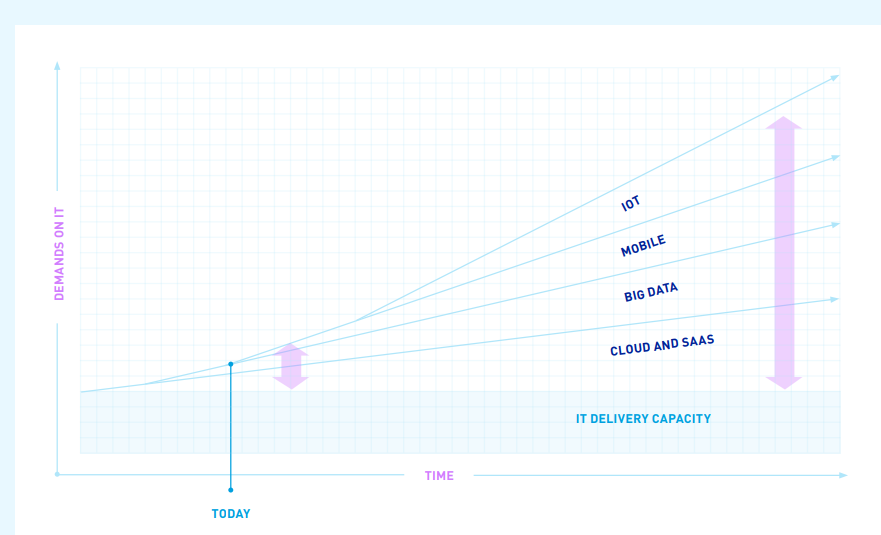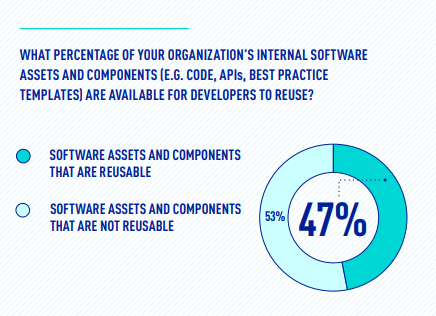Healthcare and life sciences (HLS) companies each stand to lose an average of $6.1 million in 2022 if digital initiatives are not met. The pandemic changed how healthcare organizations rely on their IT teams as new technologies, like telehealth and connected devices, became essential. That’s just the tip of the iceberg. Healthcare and life sciences companies are struggling to keep pace and meet increasing patient expectations. That’s why healthcare digital transformation is important now more than ever.
5 reasons keeping pace with healthcare digital transformation is so hard
In MuleSoft’s latest report, The state of digital transformation for healthcare, we interviewed 171 healthcare IT leaders about the state of digital transformation in their organizations. Below, we’ll identify the top five challenges from that report that are significantly hindering healthcare digital transformation. Note: All data used comes from the report above.
1. Siloed data and lack of integration
Healthcare and life sciences organizations have the most applications of any industry (1,046 on average). Yet only 29% of these apps are integrated. Whether you’re creating a 360-degree patient view, optimizing contact centers, or streamlining clinical trials, a universal integration solution is critical to complete modern initiatives. Digital innovation requires the ability to quickly and securely unlock, surface, and integrate data.

2. Outdated IT infrastructure
Unlocking data proves difficult without a modernized infrastructure. Forty-five percent of IT leaders cited outdated legacy infrastructure as a key challenge to digital transformation. To create a seamless, connected patient experience, healthcare and life sciences organizations are realizing the value of critical data to drive insights and business decisions.
To access this data, myriad data sources and applications must exchange information quickly, effectively, and securely. But many healthcare and life sciences systems rely on outdated legacy infrastructure that leads to siloed and disparate technologies. To keep pace in today’s digital world, healthcare IT infrastructure should be flexible, scalable, and able to address IT deficiencies now – or face the possibility of falling behind.
3. IT bottlenecks
It’s no secret that the demands on IT teams are growing faster than budgets, resources, or the teams themselves. You may know this as the IT delivery gap. Fifty-three percent of IT projects were not delivered on time across the industry (in 2021). It’s already a challenge to keep pace with ever-growing digital needs, and now, IT teams are expected to speed up while already at capacity.
To access data in a legacy system, healthcare and life sciences organizations often turn to custom code and point-to-point integrations as a quick-fix solution. However, this approach quickly increases integration complexity and creates bottlenecks by relying on a small number of IT team members with the understanding of this integration.
Custom code is time consuming, brittle, and requires a lot of downstream maintenance. The key to relieving these bottlenecks is to reduce custom code and point-to-point integrations. Try an API-led approach to reusing code and APIs, and do more with fewer resources.

4. 47% of software assets are reusable
It’s not surprising that the industry is struggling to keep up when the majority of their software assets are not reusable. This report shows what we’ve seen firsthand: healthcare and life sciences organizations stay ahead of the competition by reusing code, APIs, and templates to implement initiatives. Not only does reusing proven assets save time, but it’s far more secure, easier to govern, and requires minimal maintenance.

5. Security and governance concerns
Security is always at the forefront of healthcare. HIPAA compliance, following Medicare and Medicaid regulations, and staying on top of new government mandates are non-negotiable.
There is an effective way to digitally transform your organization at scale without fear of security or governance issues. Using modern API-led strategy provides multi-layered protection to data, systems, and APIs. It’s also key to govern your data and APIs from a single platform with visibility to all assets.
Conclusion
Healthcare digital transformation has become critical for satisfying patients, getting products to market faster, and delivering better outcomes. Yet data silos, legacy infrastructure, IT bottlenecks, non-reusable assets, and security concerns are a persistent challenge. Organizations must leverage the proven benefits of API-led integration to digitally transform.
Learn more about the state of digital transformation through a healthcare and life sciences lens.









